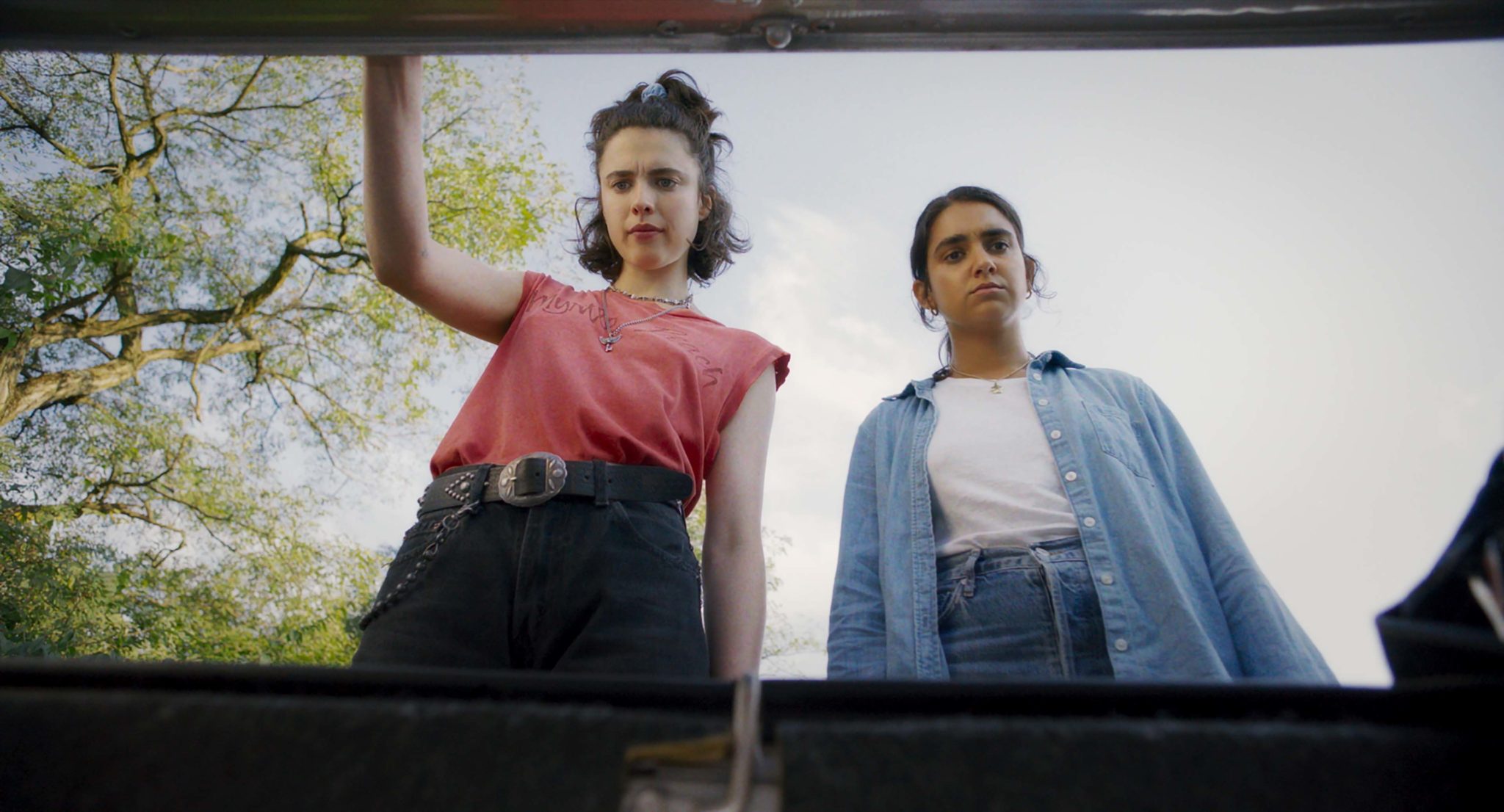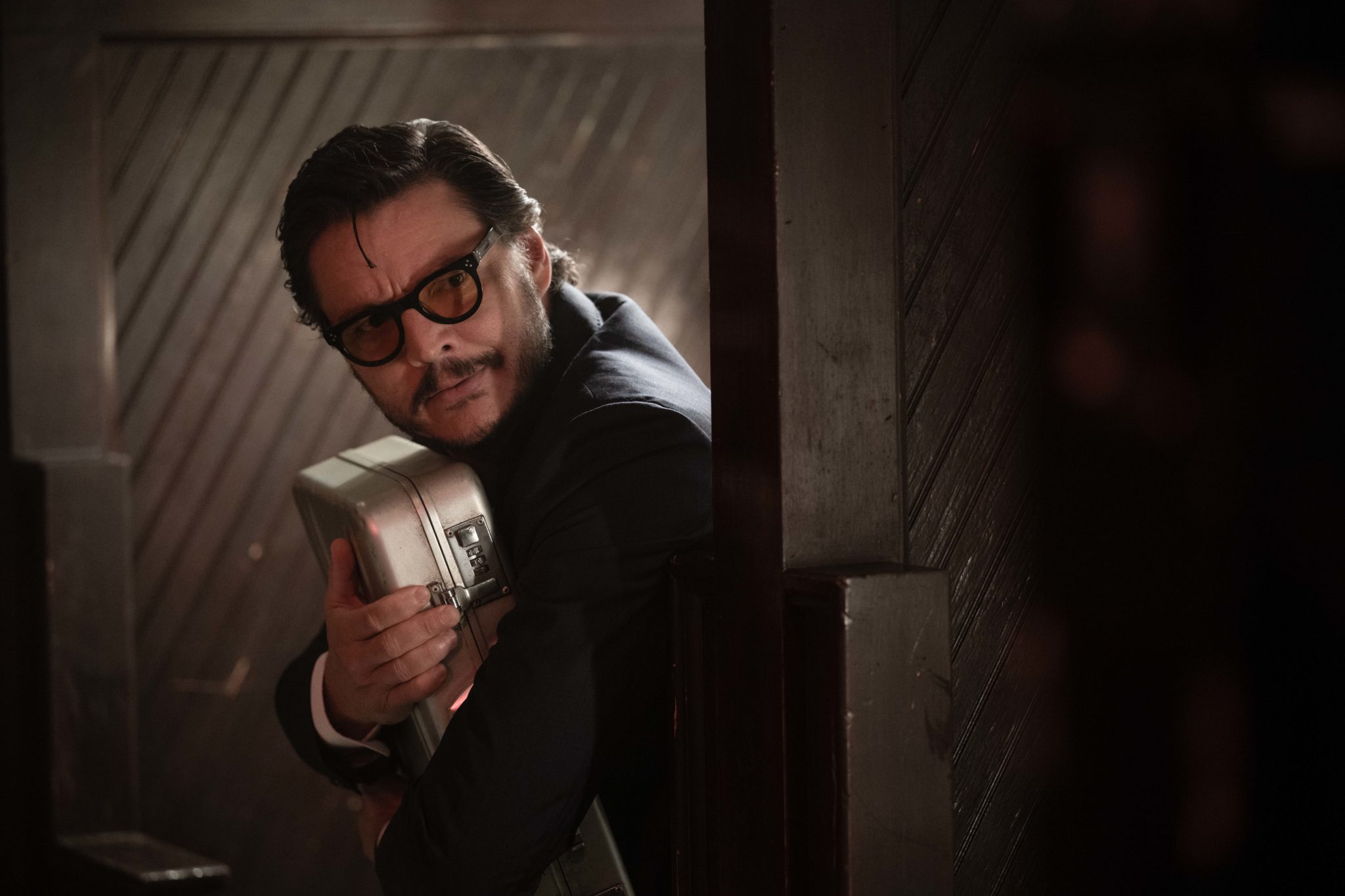- Film And TV
- 29 Mar 24
“You see so few lesbians represented onscreen, but they’re usually so heavy and often very tragic.” - Ethan Coen and Tricia Cooke on Drive Away Dolls

Ethan Coen and Tricia Cooke discuss their wild caper movie Drive-Away Dolls.
In the early 2000s, a few years after Ethan and Joel Coen had released the iconic black comedy crime film Fargo, and a few years before the brothers would win Best Picture for No Country For Old Men, Ethan had an idea for a completely different type of movie – or, should we say, his wife did.
Ethan Coen met Tricia Cooke when she edited the brothers’ Miller’s Crossing in 1990, and they married three years later. Cooke went on to edit many Coen Brothers films, including The Big Lebowski, O Brother, Where Art Thou and The Man Who Wasn’t There. The marriage between Coen and Cooke was always non-traditional; Cooke is a lesbian and they both have partners outside their marriage, but they have lived, worked and raised children together with deep love and affection.
Cooke always wanted to write and direct, and in the ’90s had an idea for a fun, wacky, lesbian caper. Coen was excited by the idea of collaborating on a film that would be a much sillier and sex-filled romp than the more precise stories he worked on with his brother. Cooke came up with a title that she thought would clearly telegraph the tone of her film: Drive-Away Dykes.
However, years passed without their idea gaining traction, and after some difficult projects like The Ballad Of Buster Scruggs and Hail! Caesar, Ethan Coen announced in 2018 that he was taking a break from filmmaking. Both brothers obviously thought it was time to focus on family – but it was Joel who first decided to make a film with his wife, directing Frances McDormand in The Tragedy Of Macbeth in 2021.
Maybe Joel’s cinematic love letter to his wife’s talent spurred on Ethan to revisit the comedy he and Cooke had dreamed of long ago, and so decades after its inception, we’re finally getting to see their passion project onscreen, this time with the slightly more staid title of Drive Away Dolls.
 (L to R) Margaret Qualley as "Jamie" and Geraldine Viswanathan as "Marian" in director Ethan Coen's DRIVE-AWAY DOLLS, a Focus Features release. Credit: Courtesy of Working Title / Focus Features
(L to R) Margaret Qualley as "Jamie" and Geraldine Viswanathan as "Marian" in director Ethan Coen's DRIVE-AWAY DOLLS, a Focus Features release. Credit: Courtesy of Working Title / Focus FeaturesThe first of a projected lesbian trilogy, the story follows charismatic and reckless Jamie (Margaret Qualley), and uptight Marian (Gerladine Viswanathan), who go on a road trip together, driving from Philadelphia to Tallahassee. What could have simply been an odd-couple story, with Jamie’s sexual bravado rubbing guarded Marian the wrong way, becomes something altogether wackier, as the women become embroiled in a scheme including a severed head, a mysterious briefcase, and some powerful people hellbent on catching the women as they hit every lesbian bar on their route.
The film is set in 1999, which was important to both writers. “We wrote the script originally in the early 2000s, very close to 1999,” explains Coen, who directs the film. “But the second reason is it’s a world that Trish knows, that kind of lesbian bar scene of that era. Also, cell phones and the internet and those types of things are more prevalent today, whereas they weren’t back then. So it was easier to tell this story if it was a period story.
“There was also something a little more transgressive about, ’Oh, we’re lesbians in 1999’ than there is now, when everyone knows everything and nothing is forbidden. It’s fine. There was more of a naivete back then than there is now, and I think some of the naughtiness would be missing if we set it now.”
And the film gets naughty. Among cameos from A-list stars, some psychedelic visuals and sheer kook, there’s also a lot of, well, horniness. Drive-Away Dolls is horny film, in a way Coen brothers films never were.
“That’s great,” laughs Cooke. “I think it’s true and I would have to take responsibility for that. That is so good. I’m going to treasure that.”
“That should be the focus,” laughs Coen.
“That has got to be the tagline of the movie: ‘It’s a horny movie.’ Oh my god, that’s going on the poster.”
But the unabashed horniness is important. Cooke wanted to create a film that was a love letter to lesbian bars and spaces, many of which are being erased in the States. But she also wanted to write a film about lesbians that avoided some of the common pitfalls of modern lesbian films, which can often be incredibly serious` and even tragic, with sex scenes that either feature the male gaze, or are joyless and emotionally tormented rather than joyful, pleasurable or – that forbidden word – fun.
“Growing up and coming out as a lesbian, you see so few lesbians represented onscreen, but they’re usually so heavy and often very tragic,” remarks Cooke. “It was important to represent queer women who were just part of this caper and they’re being queer, and that’s something to be celebrated. Even their sexual promiscuity – at least Jamie’s is something that I thought we don’t see a lot of, and it would be fun to represent that onscreen.
“Like you said, usually when you see lesbian sex or lesbians in movies, it’s often really intense and can be very serious, or doesn’t always usually have a happy ending – and that is changing. But when we wrote it, that wasn’t the case. There weren’t as many. But I’m A Cheerleader was one of the few movies that was fun to watch. So we wanted to make something that was different to us at that time.”
Cooke and Coen’s shared love of pulp and B-movies also fuelled their vision, with Cooke referencing John Waters and Russ Meyer as influences, whereas Coen had a slightly different angle.
 Pedro Pascal stars as "The Collector" in director Ethan Coen's DRIVE-AWAY DOLLS, a Focus Features release. Credit: Wilson Webb / Working Title / Focus Features
Pedro Pascal stars as "The Collector" in director Ethan Coen's DRIVE-AWAY DOLLS, a Focus Features release. Credit: Wilson Webb / Working Title / Focus Features“Probably more the noir, older versions of that,” he says. “The trashier kind of noir, as opposed to sexploitation or Westerns or Blaxploitation movies. They all have a kind of freedom and slapdash quality that’s kind of fun. They’re refreshing, they go, they’re propulsive.
“There was one shot from the ’70s that we loved, in a movie called Poison Ivy, and we replicated it. I mean, Doris Wishman’s Bad Girls Go To Hell was an important movie for me. And it’s got a great title. Then Faster Pussycat! Kill! Kill! That kind of car culture, with a very fast paced, strong women feel. “But we didn’t refer to any other movies with specificity. Even talking with our DP about how the film would look, we would rarely talk with specificity. It was more talking about the feel of all the movies we were referencing.”
Both Coen and Cooke are experienced editors, and they say this influences how they conceive of and write a film.
“We’re very conscious of two things that maybe other writers are less conscious of,” muses Coen.
“We’re conscious of how the movie is going to be covered and how it’s going to be directed – in effect, what it’ll look like shot from where. And we’re also thinking as we’re writing about how it’s going to be cut in a very general way. I mean, is that a writing decision or an editing decision? It’s kind of both.
“They’re all decisions about, ‘What’s the movie going to be? How do we see the movie?’ There isn’t really even a separation in our minds of those different functions. Those names are kind of artificial – writer, director, editor. Making the movie as I did with Joel, we’re just thinking at every stage, ‘Okay, what’s the movie? What’s it going to look like? What’s the good cut?’ They’re all that same question.”
Much interest has been paid to Cooke and Coen’s relationship, but it’s clear that their marriage, living arrangements and working collaborations simply work for them, and they express deep gratitude for being able to work together on this film. “Collaborating workwise is a way for us to stay very connected still,” says Cooke. “I mean, we are still married and we still do share a home, but we both have other partners. So it was fun. We have similar sensibilities and that made it easy to collaborate – we have a long history of working together. I worked with Joel and Ethan for many years in the cutting room, so there’s a shorthand, an ease and a comfort that we have together.”
“And you know, many of the things Trish just said about the two of us apply to me and Joel as well,” says Coen. “It’s just like, you enjoy spending time with a person you have a close personal connection with. It’s all easier, work is more of a pleasure.”
“And they no longer have a romantic relationship either!” quips Cooke.
• Drive-Away Dolls is in cinemas now.
Read this interview and more in the latest issue of Hot Press:
RELATED

- Film And TV
- 22 Sep 21
WATCH: Brendan Gleeson stars in Joel Coen's broody The Tragedy of Macbeth trailer
RELATED

- Film And TV
- 21 Dec 25
My 2025: Corrina Brown - Best movie? " I really enjoyed Steve on Netflix"

- Film And TV
- 20 Dec 25
FILM OF THE WEEK: Avatar: Fire and Ash

- Film And TV
- 19 Dec 25






